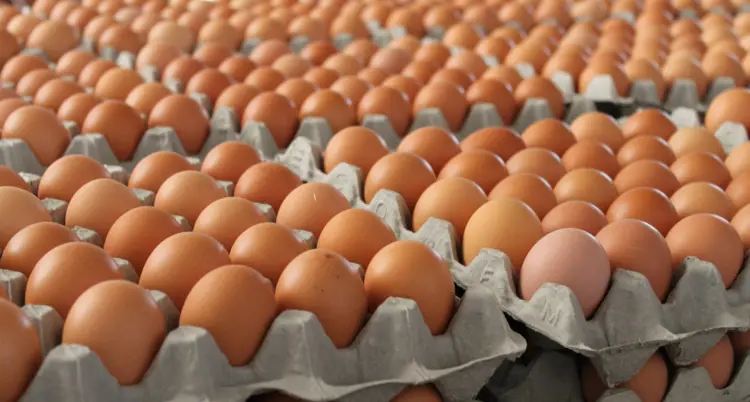Layer 500
As published in The Poultry Bulletin - June 2016 Over the last decade genetic improvement has increased production by approximately 2.5 eggs per year in commercial hens. Together with an extension of the laying cycle from 68 to 75 weeks of age, this has resulted in 70 more eggs per hen in the last two decades. Over the next 5 years, ISA expects to see continued genetic improvement and longer production cycles. By 2020, parent stock should produce about 120 day old chicks and commercial layers will produce about 500 first quality eggs in a production cycle of 100 weeks.

Lohmann Tierzucht and Hy-Line International have also focused on improving laying persistency and extending the laying cycles and they are reporting similar improvements in performance.
Last year, the results of the 39th North Carolina Layer Performance and Management Test were published. In this technical comparison, a number of commercial white and brown layer breeds were compared. The breeding companies deliver hatching eggs from their Parent Stock flocks on the same day to the Piedmont North Carolina Research Institute. All breeds were hatched and reared together under the same conditions and later housed under comparable environments with the same management. All important technical and economic data were collected for each breed and housing system.
Their report summarised the first cycle up to 69 weeks of age. In the table below, data taken from the report are presented, for some of the commercially available brown egg layers’ breeds housed in traditional cages.
Achieve prolonged production cycles
To achieve improved laying persistence for a prolonged production cycle requires a rearing period focused on achieving the correct early development of the skeleton, controlled body weight growth during rearing and the development of a healthy digestive tract. Good management of these factors will result in a flock of uniform pullets at 16 weeks of age.
From point of lay until 35 weeks of age, growth rate must be steady until mature body weight is achieved. The result will be a robust bird which has the ability to cope with the challenge of achieving and sustaining genetic potential for laying persistency.
Performance of some brown egg laying strains that were housed in cages
*Unfortunately, the Dekalb Amberlink, was not included in the test. The results of the Isa Brown (brown egg layer) and Dekalb White (white egg layer) are shown to give an indication of the performance that is being achieved by this breeding company.
Nutrition plays a major role
Nutrition plays a major role in the hen’s ability to achieve this level of performance in total egg number, egg mass and feed conversion rate. Diets must be correctly formulated to meet the requirements of the modern bird. Special attention should must be paid to the mineral (Ca/P) content needed to maximize the quality of the first eggs and to ensure skeletal integrity. The total eggshell weight produced by a hen in a 90-week cycle is almost double what it used to be and is more than 1.7 times a hen’s body weight. Incorrect amino acid levels will result in a loss in egg-mass and a decrease in egg size, and it will negatively affect feather cover.
De Heus developed a range of diets to support the hen in achieving good laying persistence for an extended production cycle.
A number of customers have been using these diets for the past year and have seen the benefit of the improved nutrition on performance. Below are summary graphs which show the difference in hen performance between flocks on standard diets (2014/2015) and current flocks (2015/2016) on the new De Heus diets.
Historically, producers have culled their flocks at around 65 - 70 weeks of age. Nowadays, producers take flocks through to 80 - 85 weeks but there have been no suitable changes made to the way birds are fed through extended cycles. Hens have not been able to sustain their laying persistency on these feeds, as can be seen from the table below. This table shows the performance producers were achieving on standard diets and that being achieved on improved diets formulated by De Heus.
Production comparison of hens on improved diets versus traditional diets
Using the improved De Heus diets, customers are successfully keeping birds through to 85 weeks of age and are reaping the benefits of the higher laying persistency with almost 100 more eggs per hen in a cycle. Feed intakes are lower (because the feed is accurately formulated to meet the requirements of the modern hen) and body weights are better (resulting in better cull prices).
De Heus have launched the Layer 500 nutritional solution to assist producers in supporting modern laying hens through longer production cycles, to achieve:
- good laying persistence and more eggs per hen housed,
- lower feed intakes,
- better body weight control
- improved return on investment


